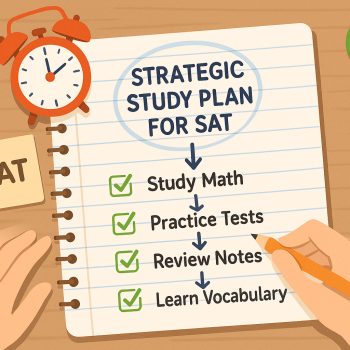Introduction: Why the SAT Still Matters for UT Austin Applicants
If you’re a high school student or a parent helping one navigate the road to the University of Texas at Austin (UT Austin), the SAT question probably sits near the top of your list: Do I need to take the SAT? If I do, what score should I aim for? How will UT Austin use my score? This guide walks you through those exact questions in plain language—no jargon, just practical insight. Our goal is to help you make smart choices about testing, preparation, and how to present the strongest possible application.

Quick snapshot: UT Austin and standardized tests
UT Austin is a highly selective public research university with competitive admissions. Standardized test performance has historically been one of several important components admissions officers consider, alongside GPA, coursework rigor, essays, extracurriculars, and recommendations.
In short: SAT scores can matter—especially in competitive majors and scholarship considerations—but they’re only one piece of a broader application puzzle. That means knowing how to prepare and when to submit scores is a strategic decision, not just a requirement checkbox.
What the numbers say (what most admitted students score)
Admitted students at UT Austin commonly fall within a middle SAT range. While ranges shift slightly year to year, a competitive target is to be within or above the mid-to-upper portion of that range. If you’re aiming for selective majors (engineering, business, computer science), higher scores help your academic profile stand out.
Does UT Austin require the SAT?
Admissions policies have evolved in recent years across many colleges. UT Austin’s stance on testing can change with each admissions cycle, but the practical takeaway for families: check the current application cycle’s official UT Austin admissions page for any policy changes before you finalize decisions. When a school lists SAT/ACT as “required,” they expect scores unless there is a clearly stated exception. When test-optional, applicants choose whether to submit scores.
Why test policies change and what that means for you
- Policy changes respond to larger trends—like pandemic-era shifts toward test-optional policies—and to the institution’s goals for equitable access.
- Even if tests are optional, submitting a strong SAT score can enhance a candidate’s academic proof, especially for out-of-state applicants or those from schools with less rigorous curricula.
- Some merit scholarships and program placements still use test scores as part of their criteria, so scores can have financial implications beyond admissions.
What SAT score should you aim for for UT Austin?
Rather than a single magic number, think in ranges and context. Aim to be competitive relative to the middle 50% of admitted students. For a public flagship like UT Austin, that often means a strong performance—well above national averages—particularly for applicants to high-demand majors.
SMART target strategy
- Baseline goal: Aim to be within the middle 50% SAT range reported for admitted students. If your score is below that, consider retesting or relying on other application strengths.
- Stretch goal: If you’re targeting competitive majors, set a stretch goal several dozen points above the upper quartile. This helps compensate for other weaker parts of the application.
- Safety plan: If your initial results aren’t where you want them, pair targeted SAT retakes with improvements in GPA, coursework, extracurricular leadership, and application materials.
How UT Austin uses SAT scores in admissions decisions
UT Austin considers SAT scores as part of a holistic review process. That means admissions looks beyond the number to understand the context—course rigor, school environment, obstacles overcome, and the whole profile of the student.
Areas where SAT scores weigh more heavily
- Comparing academically similar applicants from different high schools.
- Considering placement into first-year courses or honors programs (in some cases).
- Determining eligibility or competitiveness for certain scholarships.
Areas where SAT scores weigh less heavily
- When a student demonstrates outstanding academic performance via GPA and advanced coursework (AP, IB, dual enrollment).
- Creative, leadership, or extracurricular achievements that align with the student’s intended major or values.
Superscoring, score choice, and sending scores
Understanding how to send scores strategically can make a real difference.
Superscoring
Many colleges superscore—combining the best section scores across multiple SAT test dates to create a new composite that reflects a student’s peak performance. If UT Austin superscores, taking the SAT more than once can improve your reported score. If they don’t, then the single best composite still matters most. Check the most current UT Austin policy for the application cycle you’re applying in.
Score Choice
College Board’s Score Choice allows students to choose which test dates to send to colleges. Use score choice strategically: only send dates that strengthen your application. But be aware: some programs or scholarship applications may require all scores.
Practical prep plan: timeline and weekly structure
Preparing for the Digital SAT benefits from an organized plan. Below is a practical 4–6 month plan that balances content review, strategy, and realistic practice.
| Timeframe | Focus | Weekly Commitment | Goal |
|---|---|---|---|
| Months 4–6 before target test | Diagnostic test, identify weakness, build content base | 6–8 hours | Baseline score and targeted study plan |
| Months 2–4 before target test | Focused review (math topics, reading strategies, grammar) | 8–10 hours | Raise scores in weakest sections by targeted practice |
| 1 month before test | Full-length timed tests, pacing, and error analysis | 10+ hours | Build stamina and reduce careless errors |
| Test week | Light review, sleep, logistics | 2–4 hours | Arrive confident and well-rested |
Weekly study structure example
- 2 days: focused content (algebra, geometry, grammar rules).
- 1 day: discrete practice (vocab-in-context, quick math drills).
- 1 day: full-section practice (reading or math sections timed).
- 1 day: review mistakes and concept flashcards.
- Weekend: every other week take a full-length digital practice test.
How to interpret your diagnostic and set a realistic goal
Start with a diagnostic test under real timing. Identify patterns, not just a single weak topic. For instance, missing questions because you ran out of time is a different problem from missing them because you don’t understand the algebraic concept.
Concrete steps after diagnostics
- Categorize errors: content, strategy, careless, pacing.
- Assign weekly practice blocks to each category.
- Measure progress every two weeks with a timed section; adjust focus.
Real-world examples: Two student profiles
These short case studies show how real students might use SAT scores in their UT Austin application strategy.
Case A: Maya — the engineering hopeful
Maya has a 4.0 weighted GPA, lots of AP math and science, and strong extracurriculars in robotics. Her first SAT was good but not competitive for her major. She used targeted math tutoring, practiced data interpretation and problem-solving under timed conditions, and raised her math section significantly. She submitted her best score and highlighted her GPA and STEM coursework in the application for context.
Case B: Marcus — the creative writer
Marcus excels in English and has a strong portfolio of writing samples. His SAT Reading and Writing scores are solid but not exceptional. Because his academic record and essays demonstrate mastery, he focused on polishing his essays and activities. He still took the SAT once to keep options open for scholarships that consider test scores.
Preparing for the Digital SAT: what’s different and how to adapt
The SAT moved to a digital format, which changes some logistics but not the core skills tested. Digital delivery emphasizes efficient navigation, digital annotation skills, and comfort with on-screen reading. Practice in the actual testing app or with official digital practice tests to replicate conditions.
Digital tips
- Practice with the official digital interface so you’re comfortable with tools like highlighting, flagging, and the on-screen calculator.
- Work on screen-reading stamina—timed digital full sections, not just paper practice.
- Simulate test day with the same device orientation and break structure.
How parents can support without taking over
Support is powerful when it’s steady and practical. Here are ways parents can help while keeping the pressure healthy:
- Create a study schedule together and respect downtime.
- Provide healthy meals and sleep—physical readiness matters.
- Help arrange practice tests and logistics (registration, transportation on test day).
- Celebrate effort—raising scores is often incremental and requires persistence.
When to consider professional help—tutors, programs, and Sparkl
Many students make meaningful improvements with a structured plan and consistent practice. For others, tailored support accelerates progress. If your student struggles with pacing, specific content areas, or needs a higher jump in score to be competitive for UT Austin, targeted tutoring is worth considering.
What good tutoring does
- Pinpoints specific weaknesses and builds a focused plan.
- Teaches test strategies (time management, elimination techniques, digital tools).
- Provides accountability and regular progress checks.
For families interested in personalized help, Sparkl’s personalized tutoring model—1-on-1 guidance, tailored study plans, expert tutors, and AI-driven insights—can fit naturally into a student’s preparation. Sparkl tutors often combine content coaching with test-day strategy and regular diagnostics, which can be especially effective for students targeting UT Austin’s more competitive programs.
Putting it all together: an application checklist focused on SAT and testing
- Confirm the current UT Austin testing policy for the cycle you’re applying to (required, optional, superscoring rules).
- Take at least one diagnostic practice test early (digital format if possible).
- Create a realistic study timeline (4–6 months recommended for most students).
- Use official practice materials and simulate digital testing conditions.
- Decide whether to submit scores based on how they compare to the middle 50% range for admitted students and to your major’s competitiveness.
- Retake the test if a meaningful improvement is realistically possible with targeted preparation.
- Consider 1-on-1 tutoring if you need focused gains or help with pacing and strategy.
Scholarships and course placement: extra reasons to consider testing
Even when tests are optional for admission, they sometimes matter for scholarship qualification and for placement into certain courses or honors tracks. If scholarships or specific program admissions matter to your plan, submitting a strong score can be a differentiator.
Common mistakes to avoid
- Assuming test policy status won’t change—always verify the policy for your application cycle.
- Neglecting practice in the digital interface—digital fluency reduces errors.
- Overloading test weeks—space out attempts and give time for measurable improvement.
- Relying only on last-minute cramming—steady, deliberate practice yields the best results.
Final thoughts: confident, calm, and strategic
Getting into UT Austin is a holistic process. SAT scores are important, especially for competitive majors and scholarship considerations, but they are not the only deciding factor. The students who succeed are those who pair academic preparation with smart testing strategy, well-crafted application materials, and thoughtful planning.
If you or your student want a tailored plan—built from diagnostics, regular progress checks, and individualized coaching—consider professional 1-on-1 tutoring that blends human expertise with data-driven insights. Sparkl’s personalized tutoring approach—tailored study plans, expert tutors, and AI-driven insights—can help students target the specific gains they need without wasting time on generic content. When tutoring feels like a natural fit for your student’s learning style and schedule, it often pays off both in score improvements and in confidence on application day.

Resources to make this manageable
Here’s a short action list to move from reading to doing:
- Step 1: Run a digital diagnostic test under timed conditions this week.
- Step 2: Map a 12-week plan focusing on 2–3 highest-impact areas from the diagnostic.
- Step 3: Schedule practice tests every two weeks and analyze errors thoroughly.
- Step 4: Decide 6–8 weeks before application deadlines whether to submit scores based on progress.
- Step 5: If needed, connect with a tutor for targeted, weekly sessions focused on weaknesses and test strategy.
Parting encouragement for students and parents
This process can feel heavy—but remember: improvements are often incremental and achievable. Many students find that targeted effort yields the score improvements they need, while others strengthen their applications through coursework, leadership, and creative work. Wherever you are in the process, take a breath, make a realistic plan, and keep perspective. UT Austin is looking for students who will thrive on its campus—your full story is what will shine in the end.
Good luck, and remember: steady practice, smart strategy, and targeted support can move the needle. If you want help turning this plan into a personalized study plan, consider a tutoring option that fits your student’s schedule and learning style—especially if your goal is a competitive major at UT Austin.




















No Comments
Leave a comment Cancel